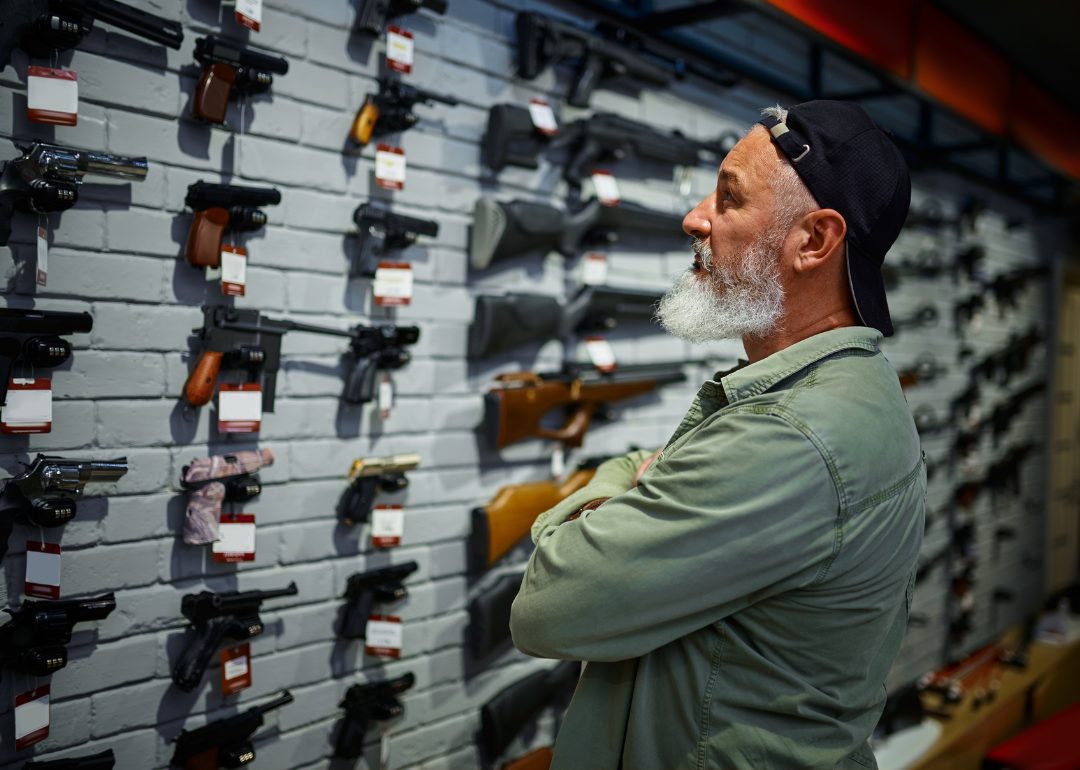
This is the time-to-crime rate for firearms in Tampa.
The average time between the purchase of a gun and its recovery from a crime scene has gotten shorter in recent years, 2023 data from the Bureau of Alcohol, Tobacco, Firearms and Explosives shows.
This span of time, known as 'time-to-crime,' is used to gauge levels of criminal intent in the purchase of firearms, as well as to deduce where hubs of gun trafficking are located. A shorter time-to-crime indicates that weapons were likely purchased with criminal intent and might be objects of firearms trafficking.
The ATF traces firearms in order to aid law enforcement in generating suspect leads when guns are used in crimes, as well as to ascertain how and where guns are moved. To do this, members of law enforcement must voluntarily submit trace requests to the ATF, which can evaluate a gun's place of manufacture and where it was first purchased.
Because not all guns recovered during crimes are reported to the ATF—some police departments report more consistently than others—the accuracy of time-to-crime rates by city or region can be inexact. But even with inconsistencies in reporting, gun tracing has revealed that some parts of the U.S. serve as hubs for firearms trafficking. Gun traffickers notoriously take advantage of lax gun laws in some states in the Southern and Midwestern U.S. and bring firearms purchased in those states into states with stricter gun laws, particularly those in the Northeast and on the West Coast. As a result, just 10 states—including Indiana, Georgia, Texas, and Virginia—are the source of large quantities of guns recovered at crime scenes in New York and California.
In 2020, there was a significant increase in recovered guns with short time-to-crime rates with numbers nearly doubling from the previous year. This spike came as homicide rates and gun sales in the U.S. also saw dramatic increases. The full impact of the role of soaring gun sales and shorter time-to-crime rates on higher murder rates in 2020 is not yet known. Due to inconsistent gun tracing practices from police departments across the country, the true scope of short time-to-crime rates remains elusive.
Stacker compiled gun crime data from the Bureau of Alcohol, Tobacco, Firearms and Explosives on 40 cities across the U.S.; here's how Tampa compares to the national average.
Tampa
- Median time-to-crime from 2017 to 2021: 3.2 years (0.3 years faster than the national average)
- Guns found at crime scenes that were traced to a known purchaser: 8,595 (82.8% of guns found at Tampa crime scenes from 2017 to 2021)
- Average traced crime guns per year per 10,000 residents: 53.7
National
- Median time-to-crime from 2017 to 2021: 3.5 years
- Total guns found at U.S. crime scenes from 2017 to 2021: 1,922,577
- Crime guns traced to known purchaser: 1,482,861 (77.1%)



